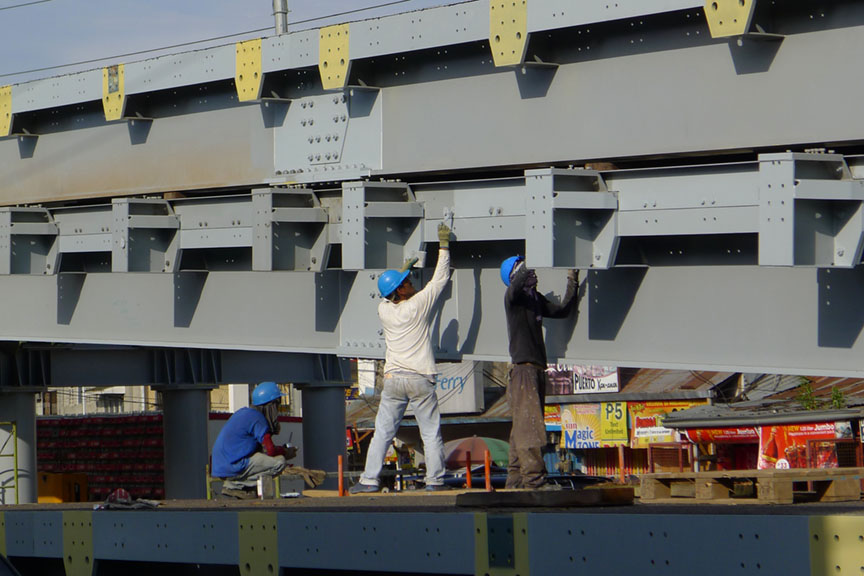DAVAO CITY (MindaNews / 7 June) – Environmental group Interface Development Interventions (IDIS) lauded the passage of an ordinance in the City Council last Tuesday that requires the use of lead-safe paints in construction, maintenance, renovation projects and other activities here.
 Painting a bridge in Davao City. MindaNews file photo by BOBBY TIMONERA
Painting a bridge in Davao City. MindaNews file photo by BOBBY TIMONERA
It is supposed to be the first legislation of its kind in the country
Chinkie Pelino-Golle, the group’s executive officer, said that the local landmark legislation would contribute to the improvement of public health and support efforts to protect the environment from the ill-effects associated with lead-containing paints.
“Lead paints are harmful to both [human health and environment], so this is really a welcome development,” she said.
The ordinance prohibits the procurement of paints containing lead above the regulatory limit of 90 parts per million (ppm); purchase of paints that lack independent proof of compliance with regulatory standard;
receipt and application of donated paints that are not compliant with the lead paint regulation; use of lead-containing paints in decorating public facilities and amenities such as schools, day care centers, children’s parks and playgrounds, health centers, sports complexes and multi-purpose covered courts.
The measure also requires that protective measures be taken “when surfaces previously coated with lead paint are disturbed during repair, remodeling or repainting activities to prevent and control the formation and dispersion of lead-containing paint chips and dust.”
EcoWaste Coalition national coordinator Aileen Lucero said in a statement that the harmful element could damage every organ and system of the human body, most especially the brain and the central nervous system.
Citing the World Health Organization, she said that the lead could affect children’s brain development resulting in reduced intelligence quotient, behavioral changes such as reduced attention span and increased anti-social behavior, and reduced educational attainment.
“Lead discharged into the environment makes its way into the air, land, and water. Painting activities, particularly the haphazard removal of lead painted surfaces, release lead particulates that can contaminate surface runoff and drinking water supplies,” Lucero said.
The children’s likelihood of getting exposed to lead is higher due to paints and dusts, she said.
She added that lead deposited in soils can last up to 2,000 years and can be absorbed by plants through their leaves and roots, which endanger the ecosystem and human health.
Lucero believed that the passage of local ordinance would encourage other cities and municipalities to enact similar policies “to safeguard the society, especially children, women and workers, from harms caused by lead paint and dust.”
On February 28, 2018, Department of Interior and Local Government (DILG) officer-in-charge Eduardo M. Año directed provincial governors, city mayors, municipal mayors, and barangay chairmen, to support the phaseout of lead-containing paints.
Año also directed them to adopt a “Lead-Safe Paint Procurement Policy” to make sure LGUs would only purchase and use lead-safe paints; ensure that other prohibited uses of lead and lead compounds such as the ban on their use in the manufacture of school supplies, toys and other children’s products, including indoor and outdoor playground equipment; carry-out appropriate activities that will sensitize government personnel, as well as, the general public about lead exposure sources, symptoms and effects, and preventive measures; and support the annual observance of the UN-backed International Lead Poisoning Prevention Week of Action every last week of October. (Antonio L. Colina IV / MindaNews)
